Đorđe: Thank you all for staying on after the rehearsal ahead of your performance at the festival. I am really glad that we can have you all in one place, this is of great importance to us. I have been doing interviews with authors and performers for the blog for a long time, but I have never done a collective interview. And, actually, I have never seen a performance after which I wished and thought it important for all the performers to have the space to say something they want to or something they believe is important but was not heard or seen in the performance.
As I understand from the festival program booklet, this is an archival-documentary-artistic piece. Now, I’m interested in what this means for you and what is it that you get from this kind of work, and, also, what you found to be the most challenging in the process?
Sanja: In the beginning we didn’t know our interviews would be used in the performance. In other words, we weren’t prepared, we knew Igor and Milica wanted to make a kind of an archive of our artistic work and they brought that something and then it was like, let’s talk for a bit, and I thought that was source material they would then listen to, that maybe it would inspire them, but then we were all slightly shocked when we heard our voices, because we said all kinds of things, we were quite outspoken, but we didn’t know it would be used in verbatim form. And yes, this is an archival-documentary-artistic process. In my opinion, though it doesn’t have much to do with this performance, it is completely different, but a kind of an attempt was made with the performance The Body Remembers, that was in 2017, 2018, those were elderly people that I interviewed, and then young dancers made something with that, but this is quite different, we are the ones talking and we are that live archive…
Jelena: In that we perform, and talk, and do everything.
What was it that you found the most challenging? Was it that relationship with your own voice and your verbatim documentary accounts, or that something new that is actually to happen?
Anđelija: I can answer that, in addition to talking, when we started working on the performance we also recalled our materials, dance materials from the past, recent and distant. And then we used that as well and, in a way, tuned it up, intervened. For me that was the most exciting part of our work. To remember some things I did 30 years ago, and to perform them now, with this experience, with this background, etc.
That’s a great cue for two questions that I had prepared, that is exactly what they refer to. How did your works, your practices and esthetics and all that you did for years back work with Igor’s idea and esthetics which he realized in cooperation with you?
Anđelija: I don’t know what the others think, I think it was very easy.
Jelena: I also think it was easy.
Anđelija: We just picked what we though was interesting …
Jelena: … from the depths of our souls …
Нела: … almost organically …
Anđelija: … and he’d manage to put it in the right place.
Jelena: Kudos to him for going about it the way he did.
Sanja: And then he’d ask us what, which part was our favorite, and he watched some of our videos, but he also asked us what it is we think represents us the best, or some parts of our work that we found interesting for some reason. So some things never made it into the performance as we had planned, for example, he wanted something from the performance On (Con)science, then we left that out, and then I suggested that spinning as something that has been following me for years.
Now I would like to follow up on what you mentioned - the spinning and On (Con)science, because what I found particularly interesting when reading the booklet was the bit in which this work was defined as an archive in movement. And we know, Sanja, that what you in a way defined and articulated is an essay in movement as a kind of stage genre. What does this mean exactly and what does the essay or archive in movement form offer to the audience compared to the other dance or performance forms?
Nela: I think this was the first time it was done this way, as far as I know, and I really do follow the scene. First of all, not just with the idea to use some old materials and for us to show and perform them, but also the video work that Igor does. I think almost no one focuses on this in this way. At least not here. It’s simply a punk way, that’s what I call it, because it’s truly incredible how much this video, as it is, says in itself. He used our archive materials, and then he shaped them, and they made a specific dramatic composition through which the whole story is told. I think it's innovative in terms of the visual part, it's very powerful. And the thing I wanted to say, when I perform something that I did when I was 20 or younger, it’s somehow very emotional - I know what I should do, I can’t do it, but some form of resistance and punk was found that worked really well as a kind of a paradigm for the atmosphere at the beginning, through a short history of our dance scene.
Sanja: Yes, this is an archive in movement told in a very lively and contemporary language without a speck of dust. It’s a very modern way, I don’t even know how I’d put it, in the form of reels, TikToks, everything that the modern younger generations can relate to. But so can we. I also found it fascinating how Igor managed to actually translate our materials into forms that are so relevant today, and it is a dynamic, lively, fresh performance. So it’s not something like…
Jelena: … some old ladies got together and they, like,... love to dance. But they are actually dancing, and enjoying themselves, they are “nailing it.” They are kicking ass. Not to mention the old man (they look at Boris)... The old man, not to mention the old man.
Boris: What I found interesting was to, in a way, face the issues, questions that interested Igor, those that we maybe never focused on in our time. At least not explicitly. Not the issue of esthetics, but that of some general reassessment, analysis of various topics. And I found that interesting, because I never thought about those things before. And somehow…they were there, it’s just that I at least never focused on that, how shall I put it, on having the right answers to his questions.
Would you care to share with us one of those questions that you found particularly interesting?
Boris: He was a lot into, say, queer culture, which was not very familiar to us. We went through all kinds of phases, had answers to questions, but we basically never perceived it as an issue that we came across in our practice, at least not in that way. So it was interesting to give it some thought. But, for example, I’m back to the first question, what I found extremely exciting was that first meeting with them (Milica Ivić and Igor), because we were alone. And somehow, no one ever asked me such things. They came with some questions and then you start telling a story of your own. I remember being very shaken when I recalled some things. And I burst into tears, they had a tough time getting me to calm down. I mean, I really hadn’t planned on doing that, and they got very anxious. Actually, maybe I had never given any of that any thought, but then I faced everything that had ever happened to me related to dance. Unlike my colleagues I am with now and here, I never had much dance practice. Performing practice, actually. I was into other, different practices that came in handy later on in life. When I went back to dancing, I did so as a choreographer. I mean, I didn’t have that kind of experience. And the little experience I did have, they managed to bring it to the surface. So working with these people is very valuable to me and I feel very close to them now. And earlier we never had a chance to socialize much or exchange anything.
Sanja: But some did.
Anđelija: This was the first time that this group of people came together in this on stage. Because, for example, I have never shared the stage with Sanja. Or with Nela for that matter. The three of us (Tatjana, Jelena and Anđelija) have been working together all our lives. I have worked with Boris, but not in this way. So that was also interesting for me. Because, after all, the stage is something very...
Sanja: Boris and I did choreography for a performance together. Blame it on Gauss. We also worked together on many other occasions. I’ve worked with Tanja, with Nela…
Anđelija: Tanja and I parted ways on the stage 30 years ago.
30 years ago? When I was three?
(laughter)
Boris: I remember them from onstage. Each one of them individually, I know all of them. They were very valuable to me back then when they were active. I will never forget that. That experience that I had, I keep telling them about it. That Tanja’s scene with the lipstick… I will never forget that.
Tanja: The House of Bernarda Alba.
Nela: At Rex (Cultural Centre)?
Jelena: Not at Rex, here (at Bitef Theatre).
Tanja: The “knockout” performance that opened this church as a theatre, which has vanished. We don’t even have a video…
Nela: I saw it. What a knockout.
What do you mean vanished?
Tanja: Gone, there’s simply no video, I can’t find it anywhere.
And that performance opened the Bitef Theatre …
Sanja: There is one more thing I wanted to say, we realized so many things in those talks. Just as Boris said. We realized things that we ourselves are not so aware of. We were somehow provoked to think and to really see, from this perspective, what had happened, from this reality that we were now living. That was also interesting, how we revisited those memories and everything we said.
Jelena: Well yes…work is always liberating…Work sets you free. That’s what was written… somewhere there.
I'm glad we spontaneously touched on another one of my questions regarding joint work and your connections with Bitef as a theatre or festival. For example, Tanja’s performance opened this theatre.
Anđelija: All three performances that Signum has on its repertoire it performed in the competition part of the Bitef Festival, and it also opened Bitef because we got in here together with Mira Trailovic. And that is something that’s very dear and important to me. From day one, literally. There weren’t even any performances yet. Nothing.
Tanja: Nothing, yes, madness.
Anđelija: And then she died soon after, and Arsa Jovanovic came who saw potential in us. And, in a way, thanks to him, we became a Bitef troupe. Back then we were something like the Bitef Dance Company is today. I mean, it was a state project in a way.
What kind of feelings and memories do you have of that period?
Tanja: The best. Because it’s also interesting that Arsa had the courage, as they say, to see some kids, he saw us at the Student Cultural Centre in 1998, it was our troupe’s first premiere, this
Triptych we did, an all-night ballet, three pieces, as Signum, he simply saw it and called us right away.
Who took part in that performance?
Tanja: The whole of Signum. Dejan Pajović, Nenad Čolić, Anđelija, Tatjana Popović, Svetlana Marković, Vesna Stanojević, as the only actress, and Tatjana Pajović. That was it, the eight of us, Arsa just suggested that we do The House of Bernarda Alba, he had the ability to intelligently, in an ingenious way, feel what could be a knockout, and that performance won the first award of the Self-management Community of Interests for culture, the same time when Some Like It Hot did, in which we also took part because we were members of the Terazije Theatre back then.
Anđelija: This award, it no longer exists.
Tanja: And it was really a hit, that was the biggest award annually presented to some theatres, and we went to Mexico with it.
Nela: I need to say something, we never performed at the Bitef Festival with the troupe, we did at the Bitef Polyphony…
But, yes, you definitely did take part in some segment or program, whether it was the Bitef Polyphony, or the showcase...
Nela: But why am I telling you this, in 1967 my mother was a translator, and I followed it from back then, and I find it fascinating that I am now performing. I mean, that’s why I am excited, I have to tell you. Every year I see one or two performances. Or more, of course. That’s what I’m saying, the continuity is unbelievable, and now I am performing for the first time.
Boris: I did Hamlet with Gorčin, it was one of the first performances at Bitef that I did costumes for. Later on I also worked with Ivana Ašković on the performance The Shadows, which was also in the main programme. Maybe there was also something else in between, I can’t remember… and now as a performer, so it’s like a full circle for me.
Anđelija: That’s right, that is very important, we are a generation that grew up with Bitef, and here are the results. So, we are long-lasting.
Sanja: In the 40 years of my artistic work this is the first time I am performing in the main programme. The performances I directed and in which I performed, even when I was in the Dah Theatre, never got selected. Bitef Polyphony from the very beginning, of course.
Boris: Any of you maybe did a Bitef opening?
Nela: I did. We did it, three or four times.
Boris: I did something, twice, once with you Grgur…
So, basically, all of you are in a way...
Boris: Bitef kids.
Jelena and Anđelija (almost in synch): As Ćirilov put it - Bitef kids!
Right, if you can remember some of those moments, are there any performances, any people, artists, colleagues, that you saw and maybe recognized as something you can relate to, something close to what you see as contemporary theatre, or something that inspired you so you said: now, this is something that I would… I’d really like something like this?
Anđelija: Well, Jelena had worked with Lindsay Kemp. Lindsay Kemp was miraculous. I have, I keep forgetting to bring it, a feather that he dropped in a scene. I’ve kept it, I have it in a notebook. And Jelena also worked with him.
Jelena: I have a badge that he gave me, and a fan, what more is there to say.
Sanja: Others that came also impacted us. Odin Teatret, for example.
Anđelija: Odin Teatret, Pina Bausch…
Tanja: Susanne Linke. That was catastrophically good. Then, when the butoh dancers started... It was extraordinary. Unfortunately we weren’t able to see Jerzy Grotowski. Then, thanks to Dah, in 1993 we were at Odin Teatret, I remember how Neca and I were up ‘til 3-4 in the morning, completely exhausted, going through the video materials. They have an incredible archive. And then also DV8 (Physical Theatre). They were great.
Anđelija: Ister Theatre was quite inspired by DV8.
Even a part of Macho Men, which we performed at Bitef’s side programme Polyphony, did a performance for the opening of an edition of Polyphony, with Boris as the choreographer, when you gave us precisely DV8 as a reference, remember?
Boris: Of course, of course…
Nela: I saw that one.
Sanja: Well, yes, Bitef inspired us a great deal, in a way this performance is also a Bitef archive, we tell, with our bodies, how the festival inspired us to maybe become artists, I was 3-4 when Bitef began.
Boris: I saw two dancers at a festival in Poland, two who worked with DV8, and then after that they came to Bitef.
Anđelija: They performed at the Yugoslav Drama Theatre (JDP).
Boris: Yes, yes, but afterwards. I mean, it’s interesting, there were also some other, strange experiences. At one point I worked at La MaMa in New York. I’d met Ellen Stewart, and after that I worked there. I mean, those are some things that came after what had been at Bitef, and it’s a different feeling when you meet someone like that and then you later also work with that someone. Not only did we meet and find ourselves in experiences that felt good, or which we would immediately recognize, but we were also becoming a part of that world.
Jelena: Because we are a part of that world.
Nela: You know what else is exciting, by working as a team through Bitef Polyphony we here also started working together more, and communicating more.
Tanja: Of the important influences I’d also like to mention Specchi e Memorie, as a drama and experimental theatre they had a very strong influence on us. They often had guest performances here, they were highly respected by Ćilirov.
You have partly already answered a few of my next questions. One of them was how was the history of dance built in these parts, and the first part of the question referred to your local teachers, mentors and the authors with whom you began and developed your careers.
Sanja and Nela (at the same time): Smiljana Mandukić!
Nela: I was with Smilja up until I had a baby, I danced for twenty years.
Sanja: And then Nela invited me and my friends.
Nela: In 1984 I founded a group and we also danced at Smilja’s.
Sanja: Before that there was a kids’ group, The Sound and Body Theatre, which I had set up with Ksenija Gaćeša, and then we performed at the Sava Centre. Nela saw us an invited us over to Smiljana’s, and that is how that first group of ours fell apart, we were 18 at the time, that little troupe lasted a year.
Nela: Three girls who were killing it!
Sanja: Then we went there, Nela was gradually slowing it down, I was taking on some of her roles, Vesna Milovanovic’s, etc. And we stayed with Smiljana for the next ten years. She left the most significant imprint because she came to Belgrade in the twenties of the 20th century and she was one of the pioneers of modern, contemporary dance here, in addition to Maga Magazinovic. They started the continuity of contemporary dance. Kaća Stojkov is also her student and dancer, Dubravka Maletić as well… The rest of us are in a way these women’s daughters, granddaughters, great grandchildren….
Anđelija: Jelena, Tanja and I have classical ballet education, and while living in former Yugoslavia we worked with just about everybody, including Nada Kokotović… because we are really dancers, there is no way I can remember how many choreographers we have worked with.
Tanja: But that’s really a special pleasure, working with Dušan Tirnanić, Lidija Pilipenko, Jovanka Bjegović, the very pinnacle of classical ballet …
Anđelija: … and since Yugoslavia was really big, Slovenians and Croats would come here, so we had a very lively scene, especially that of contemporary dance that wasn’t really widely accepted here in Serbia, there was more of it in Slovenia, Croatia…
Nela: A more northern school, as I like to say.
Tanja: The specific thing about us is that, at the beginning of the ‘80s, we first worked part time at the Drama of the National Theatre, we also had drills from the royal actors at the time, which broadened us and that drama experience had a huge impact on the language of dance. Hours and hours spent at rehearsals, you are sitting there and listening to instructions for everyone, and then hanging out in a bar, and all of that with the greatest stars in the then Yugoslavia, and directors and choreographers.
Sanja: I’ve been alternative all my life, nothing but contemporary dance, and other things along the way of course, but a completely different stage entrance.
Nela: The things Tanja talked about mean a great deal. We rehearsed for 12 years at the Atelje 212 Theatre, there was only one condition and that was to have the premiere there, which was great for us, we were constantly doing stage movement, marked some dates of theirs, we as a non-verbal theatre as they called us.
It is interesting how the three of you (Anđelija, Jelena and Tanja) primarily worked at institutions, but were also very active outside of the institutions, started some things of your own, so you also had a space of yours on that side.
Anđelija: Signum also existed when we were working in theatre, we did parallel work, it was a different time. Arsa had the idea that they should move us to Užice, for us to live and work over there, to be fully isolated and to devote ourselves only to that.
Jelena: That was a bit too much.
Anđelija: Then there was talk of Sombor, what Sombor…
Tanja: I immediately deleted that information. (Everyone laughs)
Jelena: I also worked a lot on television, with Petar Slaj for example.
Nela: I also worked at the Laboratory …
Anđelija: But I have to say that I am especially glad that I worked with Boris now, because almost 50 percent of the performances and recordings we did in his costumes, he literally dressed us. I am particularly glad that we are all on stage together.
Boris: I, for example, met Borut Šeparović in Poland when I was hiding at a festival because I was afraid of the Croats’ reaction to a Serb doing something at the festival, and when I got into choreography here, Sanja Mitrovic danced in my performances, and then she went to Netherlands and continued working with him over there, she finished the academy there and became a famous director in Europe and, years later, Borut would come over with his performances, Sanja would be on the jury. These life circles come together and drift apart in a mysterious way, also thanks to Bitef.
Listening to you talk about the time and professional context, and about opportunities, I cannot shake the impression that those circumstances really were more favorable than they are today.
Anđelija: Yes, it was a different time, but there’s some of that even now, National Theatre dancers perform at the Bitef Theatre, Bitef Theatre and Terazije Theatre dancers perform on television, they mix, there are such migrations. We weren’t judged by anyone for doing that, neither were those who focused solely on the alternative. Truth to tell, Damir Zlatar Frej did say once: “you have to stop performing all over the place”…but that was it.
Sanja: Now it wasn’t like that with Smilja, only “artistically” as she liked to joke, no moonlighting and fooling around.
Jelena: Yet we had many gigs, you perform some here, and some there, then you do something of your own, we were also younger, so…
(There’s general commotion in the exchange of experiences that is difficult to transcribe, but the atmosphere is very pleasant and somewhat nostalgic)
Anđelija: But yes, a different time, and there were all kinds of parties, and theatre, and theatres at parties….all kinds of things, some of that is also mentioned in the performance …
Nela: But, Anđelija, then you go to the rehearsal room, and you are in there for at least 5-6 hours, and now they have to leave after a couple…
Anđelija: Well, we sometimes worked up to 16 hours at a time, but it’s no wonder they have to leave, this kind of life forces them to do it.
Sanja: Both the life and capitalism. This costs this much, electricity, now you try to pay all that.
Anđelija: Completely different social circumstances.
What kind of social and systemic circumstances could now give the new generations something that would make our work easier and more productive?
Sanja: There is no stage, no physical space. Even the Bitef Theatre is no longer as open to independent productions as it used to be… there is no stage on which performances could be continuously held, there are interesting productions that don’t have a space that would enable them to have continuity.
Tanja: And the well-known topic mentioned at all the protest rallies, one percent and less for culture, with all the problems in competitions for funding and similar things…
Anđelija: I think that, in this case, the biggest problem today is that the state does not see us, for them we don’t exist, and not just contemporary dance. Look at the National Theatre’s classical ballet, it’s falling apart! The state does not view dance as a medium that one can do much with. Jelena and I participated in state events across the world, not just in Yugoslavia, because back then they understood what it meant, now - that doesn’t exist, what it boils down to is that, in a country like this, it seems that the only dance thing it needs are pole dancers…
(There is a second wave of talks that is practically impossible to transcribe)
Sanja: Nothing can really be done without the state’s systemic help, and, in the end, there should be some rules about where the tax payers’ money is spent on - not on some nonsense, but on something meaningful.
Many of us, at the same time: Тhat is our money, we are those tax payers, etc.
Nela: Being the eldest here, I find it strange that, even when some groups are set up or formed, spaces get closed, physical spaces in which others could also work, I’m primarily referring to state and city institutions of culture…
Sanja: It’s not even about whether or not there is a multifunctional space, but there is no space for contemporary dance, no physical stage that could have a repertoire that would be fostered and developed, branched out, that the state would invest in, where people could work with technical and production support, and maybe even for some fees. Because back in the day we had no problems with the audience, visits were organized, schools came to see the performances.
Nela: There were no money problems either.
Sanja: No money problems either.
Tanja: The Fifth floor at the National Theatre was also shut down, that was a great idea and a fantastic space.
Boris: Institutions were more open, we performed at the Fifth Belgrade Grammar School and talked to the students there, to hear what they see, how they understand the performances… and that’s why I think it very important that this performance happened, which talks about some history that doesn’t exist, that has been erased. And there’s a certain dose of fear, in the sense of what are we, what is it that we are doing, mostly due to inaccessibility, ignorance.
Anđelija: Boris and I were in a jury at a ballet competition and, on that occasion, asked people where all those young people studying contemporary dance are going to go after they finish school? - Well, to you. That was the answer. And I think, wait, a kid is out of school and already they are broke and hungry. That is really irresponsible of a state that spends money to educate children, and of course they leave, because here they have no place to go to. But everyone has to systemically fight for that space, even for that one space, starting with ballet schools, us, to dance troupes and organizations. Of the four years I was president of UBUS (Serbian Association of Ballet Artists), I spent three having talks at the Ministry, where they see us as crazy, or simply - they don’t see us at all.
So, for the end, what would you tell the young people, what are your wishes or messages to the current and future authors and performers on the contemporary dance scene?
Anđelija: To endure, at all costs, and ultimately it is up to our generation to fight for and provide a space for you. As for whether that is possible, I am not sure, but there is nothing without a space, everything will fall apart even more, you will leave and we know how the story ends.
Sanja: That’s right, there is nothing without a base and support. I hope this performance will inspire some young people and show them that one can and must persevere, one way or another, in this line of work. There have been all kinds of situations, but we are still here, and we are up on stage, dancing.
Anđelija: Dancing, that’s the craziest part of all.
Nela: I usually tell students: swim, you see that small island, it’s a far way to swim, you’ll get tired for sure, but swim, swim, and at one point you’ll reach it. Persistence and that’s it.
Tanja: There is one more little thing. I have been thinking about it ever since we started this - the necessity of exchange. The question also raised in the performance is - what is your formal education, and what just goes through my mind is that we learned from living examples, because we worked with so many of them, a completely different kind of material, meat, tissue that you get. It’s a pity there isn’t enough of that here. I feel that they don’t use us enough, the young don’t use us, some of them saw us here for the first time, there is no archive, people, for heaven’s sake, use us! It’ll all die, wither and rot away if we don’t give it to someone, if we don’t exchange it, reciprocal sharing, that is what’s lacking in this dance universe of ours, cultural universe in general.
Anđelija: I have worked with many young people, I don’t think they are that young now either. Isidora Stanišić and that whole generation, and those a bit younger, Milica Pisić, though she’s also not that young any more…they’ve all grown up. We worked with them quite a lot, as Ister, we just don’t cross paths with the youngest ones, where could we… …
Tanja: But that is why it’s important to make something like this from time to time, it doesn’t have to be anything glamorous.
Anđelija: And the schools, they used to bring various people to the school, from Lindsay Kemp to the Chinese ballet, they were monsters, but people passed through, and they’d send us to Bitef, and everywhere…
Boris: I had the opportunity to work even with the youngest people who are now on stage and I experienced very nice energy, there is will, desire, excitement, capacity to carry it through, and they are very hardworking and organized. I believe they will find a space for themselves, if they keep on working like that, and, as opposed to us who did not manage to secure a place for us, I would really like for them to seize every opportunity.
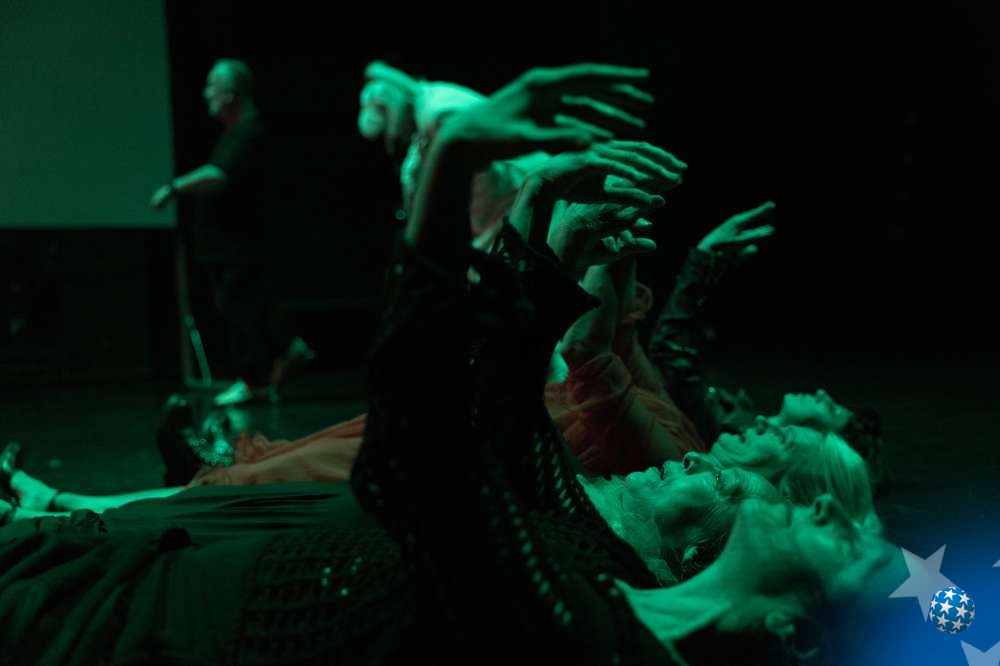
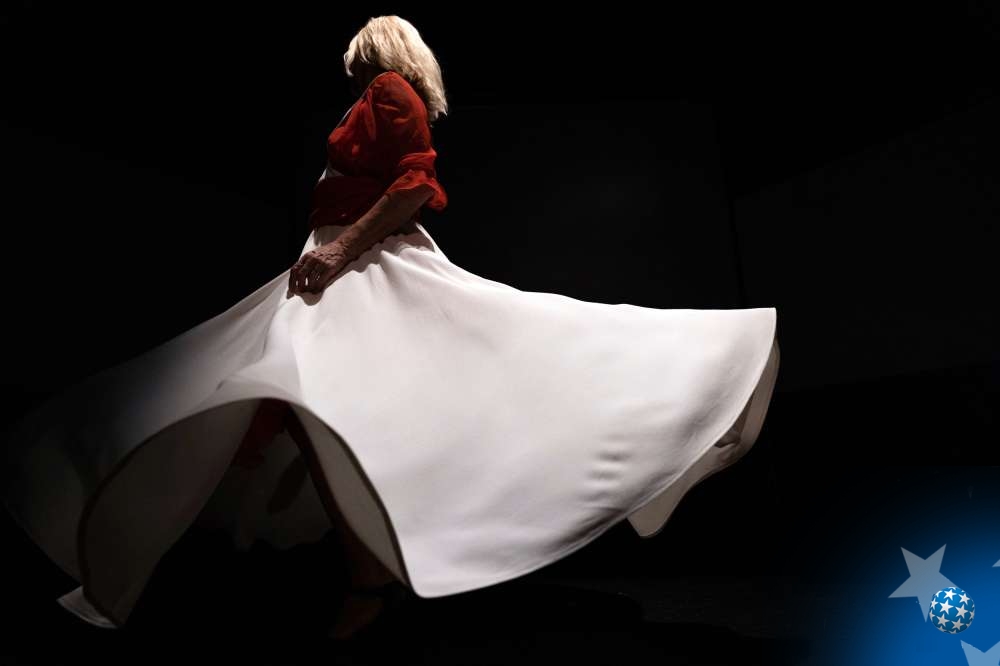
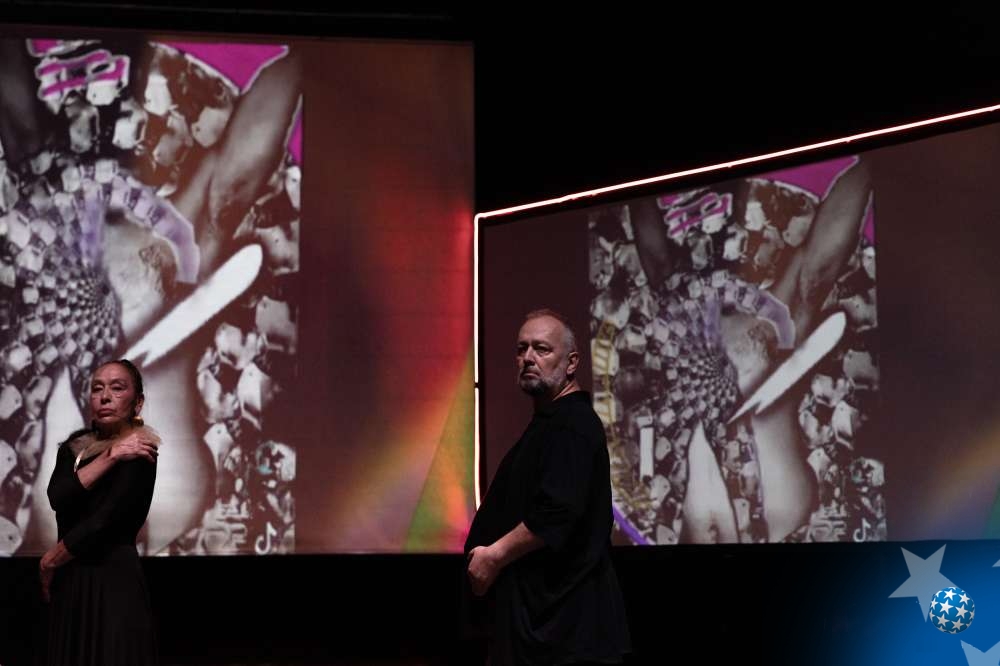
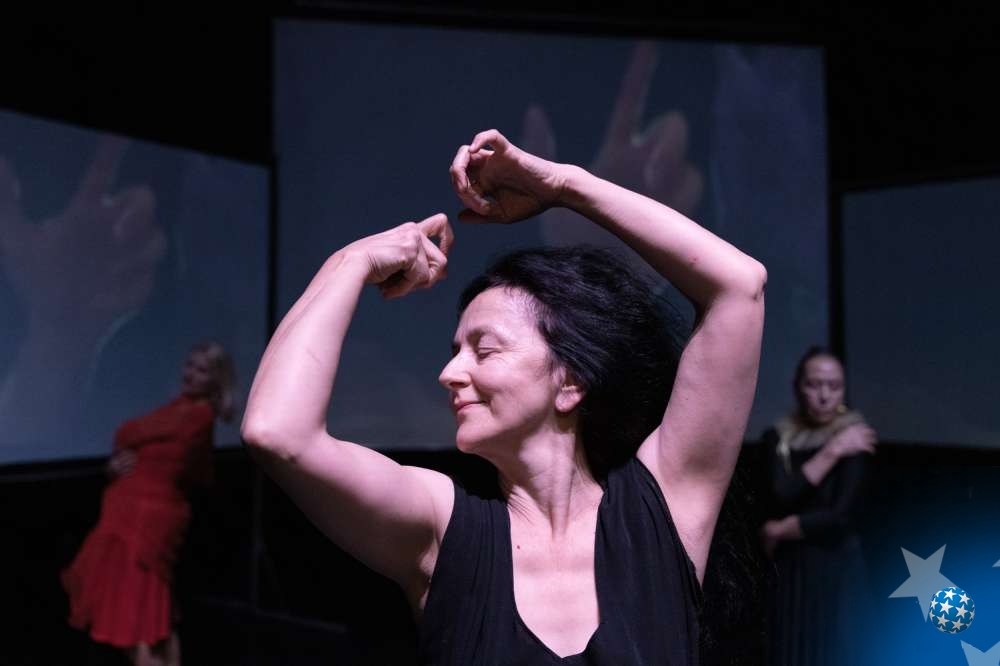
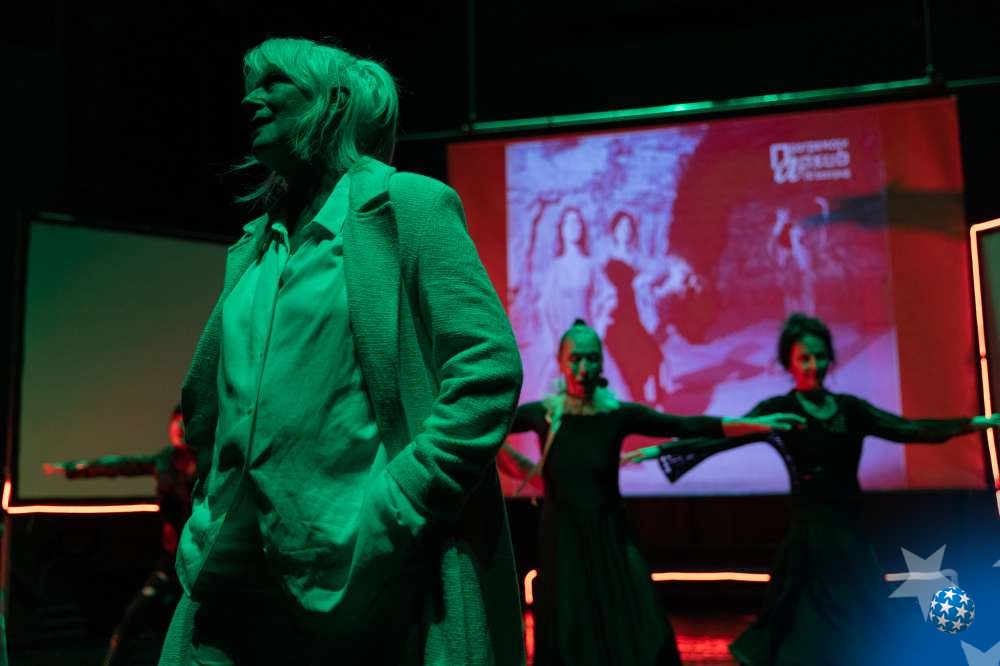
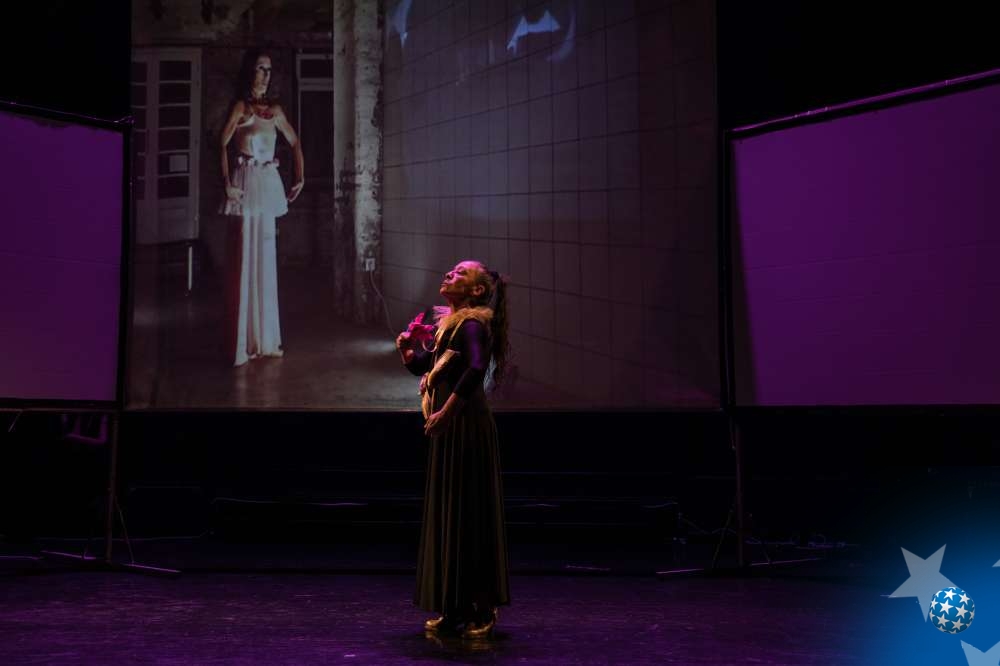
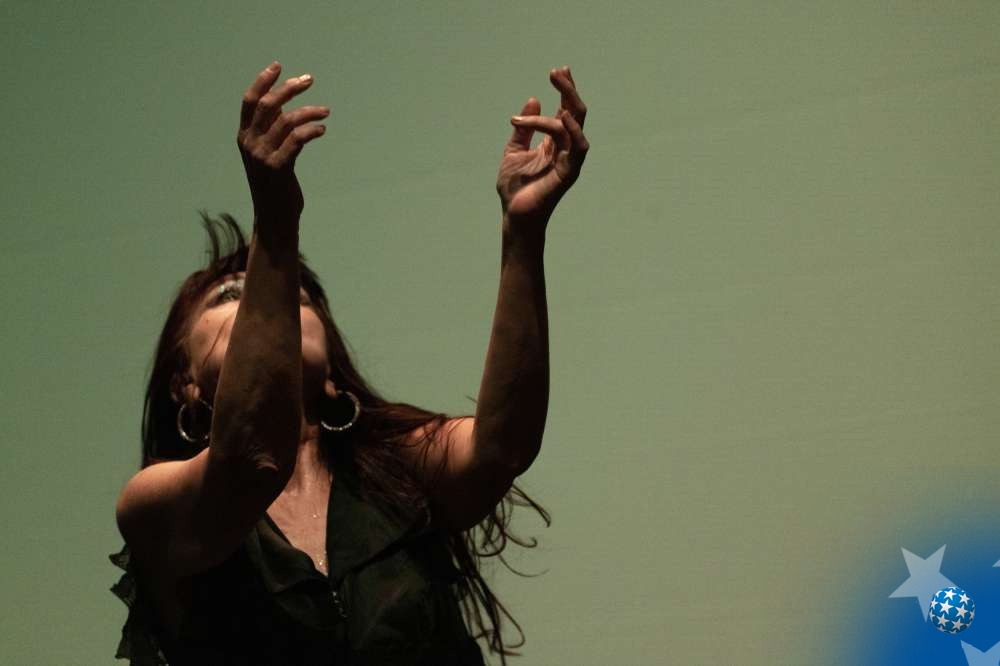
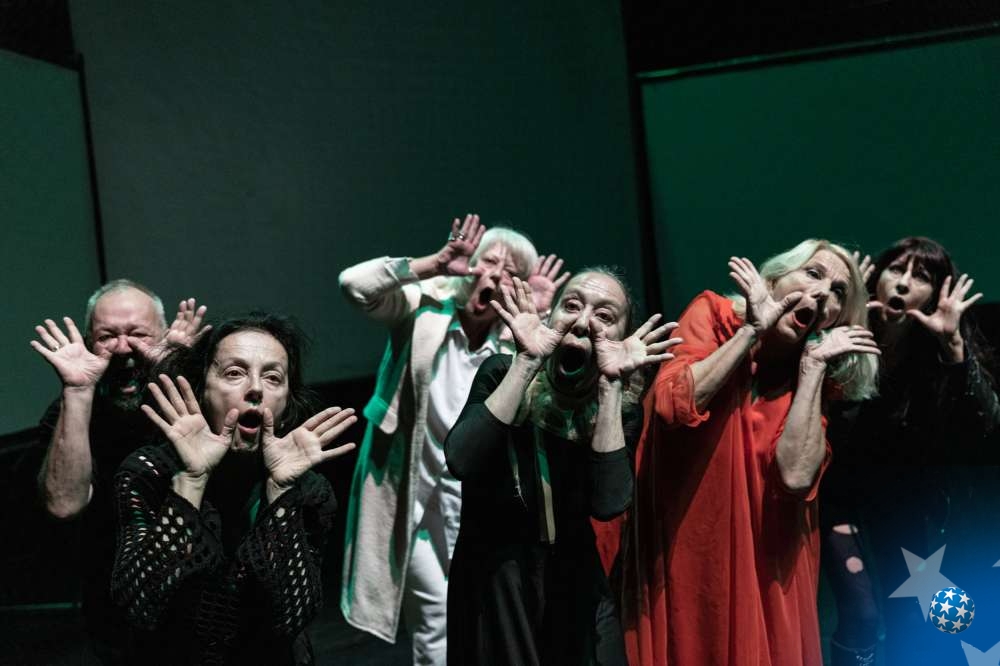
.jpeg)